I’m pleased to share more of Wendie Schneider’s photography today. Last month Wendie gave me permission to publish her pictures of round-headed bush clover. She found today’s featured plant in a restored Story County prairie as well.
Bottle gentian (Gentiana andrewsii) is native to much of the northern U.S. and Canada, but not widespread. Sometimes known as Andrew’s gentian, it thrives in wet habitats: “moist black soil prairies, openings in floodplain forests, thickets, fens, and swampy areas near bodies of water.”
Like its relative downy gentian, bottle gentian typically has blue or purple flowers, though the blossoms can be pink or white. The distinguishing feature of this plant: its flowers stay closed even at the peak of the blooming period, inspiring the alternate common name closed bottle gentian.
The Illinois Wildflowers and Minnesota Wildflowers websites contain botanically accurate descriptions of bottle gentian foliage, flowers, and seed pods. Tip for gardeners: these wildflowers are “easier to start with potted plants rather than seed.”
Once you’ve seen this plant in bloom, you’re not likely to confuse it with anything else. Wendie’s pictures show the shades of purple to blue to pink.
According to the Illinois Wildflowers site,
Bumblebees are the primary pollinators of the flowers, as they are one of the few insects that can force their way past the closed corolla. This floral characteristic excludes smaller insects that are less efficient at pollination from robbing nectar and pollen from the bumblebees. Because the foliage and roots are bitter-tasting, mammalian herbivores usually don’t use this plant as a food source. However, deer may chomp off the tender tops of the plants before they have a chance to flower. This can cause the central stem to form smaller side branches. The seeds are too small to be of much interest to birds. The ecological value of Bottle Gentian is low, notwithstanding the appeal of the flowers to humans.
The Minnesota Wildflowers website explains,
The fused petals become a papery wrapping for a 1-inch capsule with the remains of the style at the top and a seam down the sides.
As the fruit ripens the seams split to release many seeds, each wrapped in papery wings to facilitate dispersal by wind.
Wendie captured this shot of seed pods developing on a bottle gentian plant:

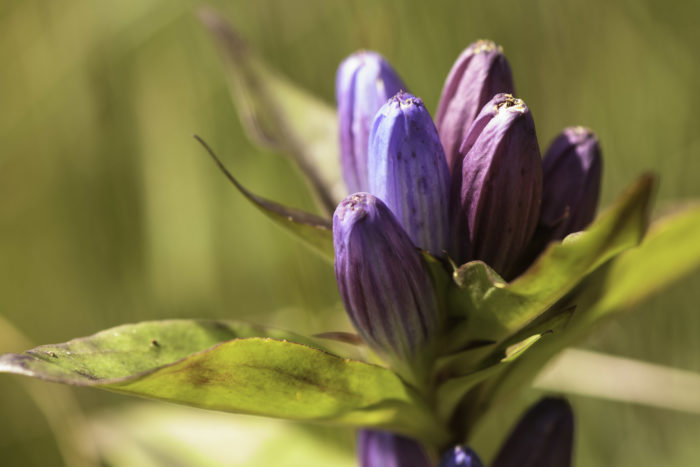

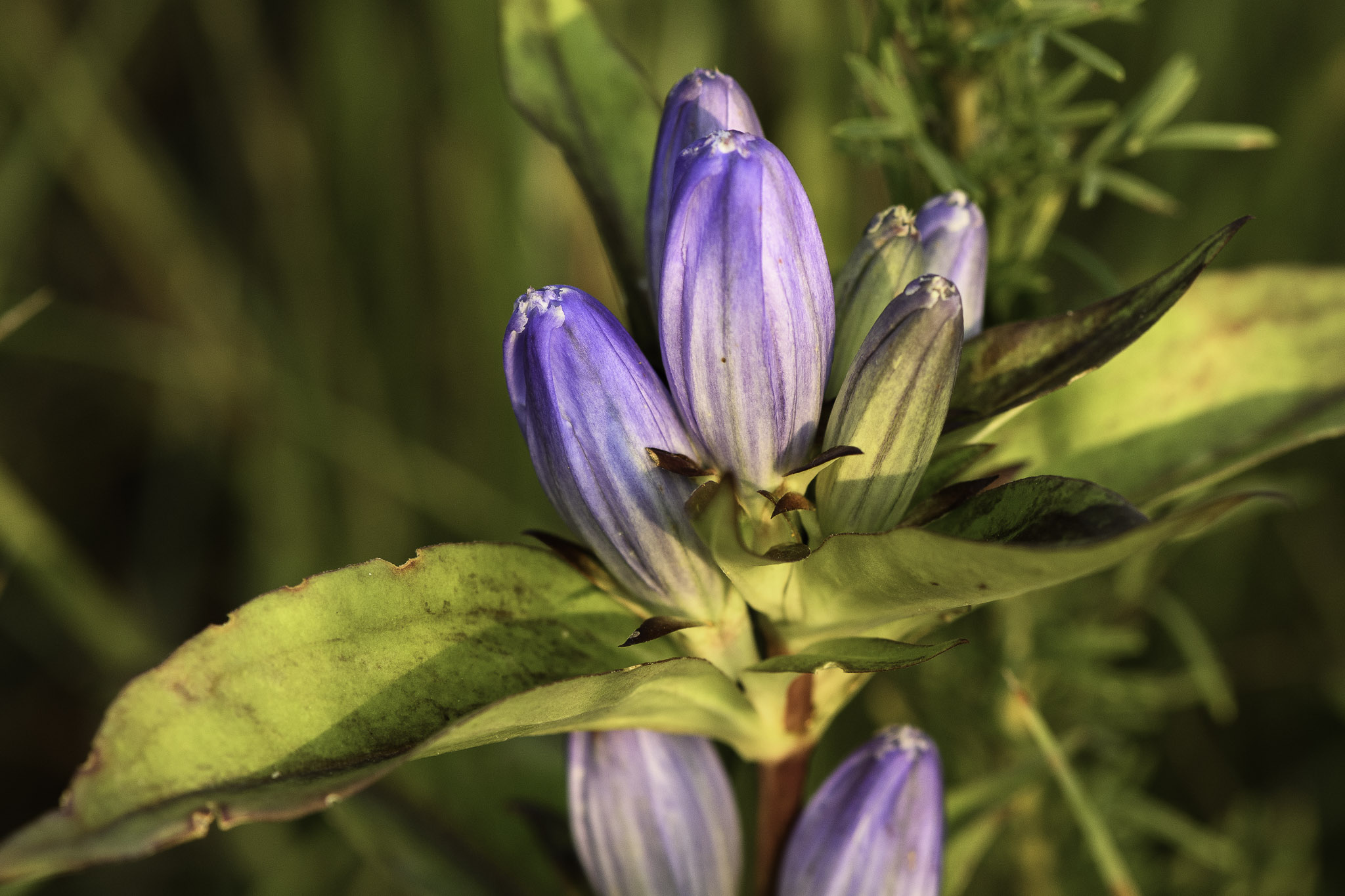
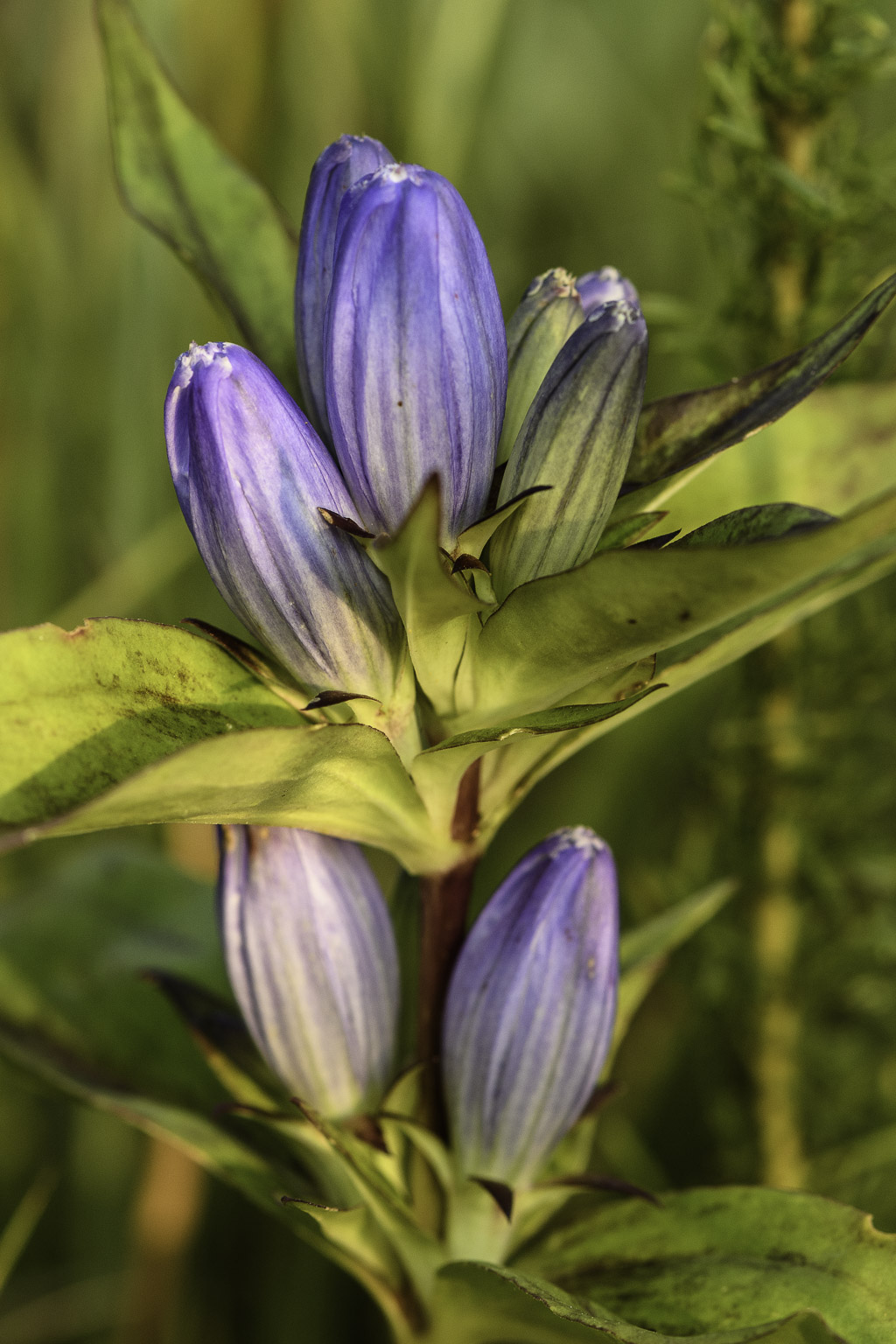
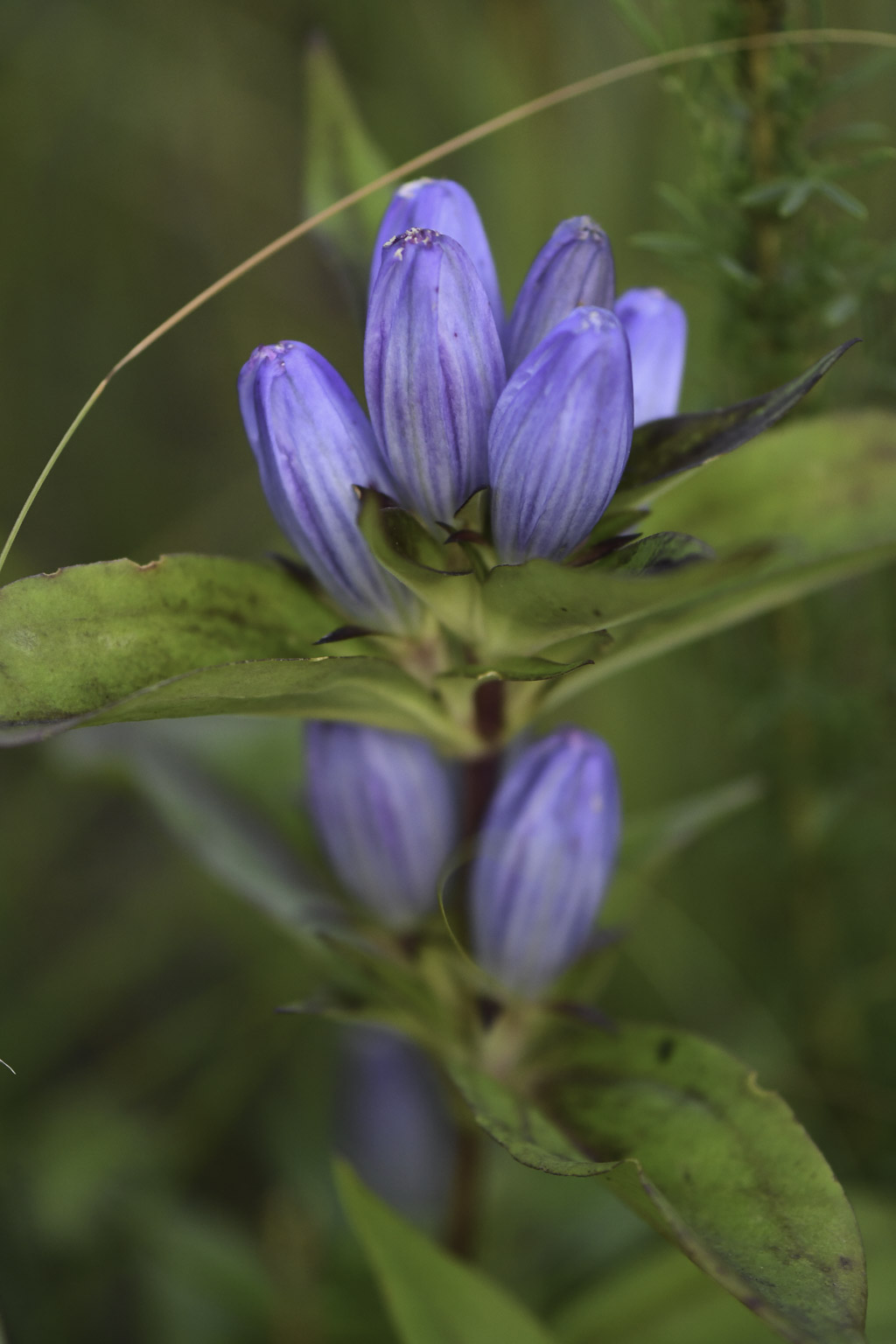

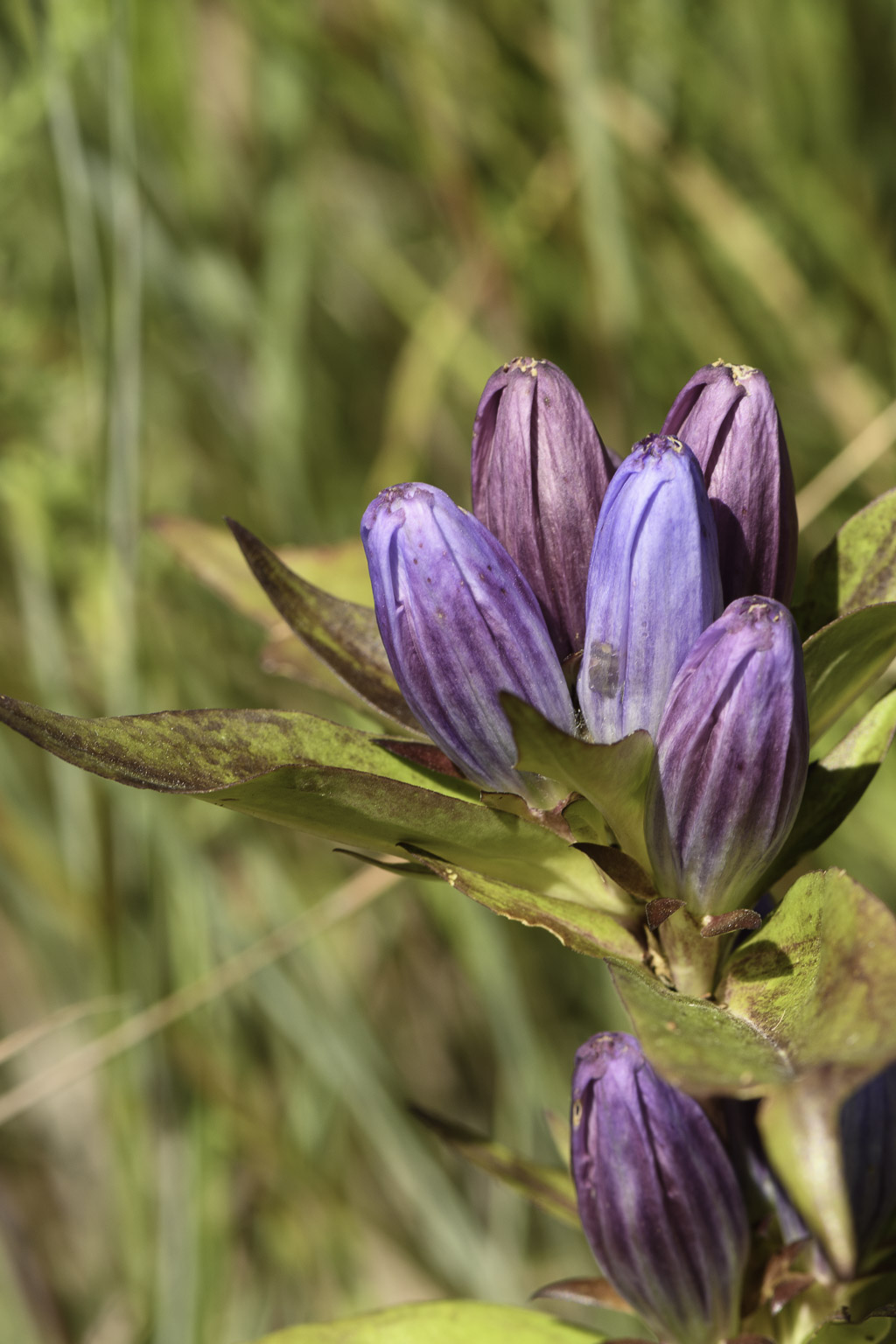

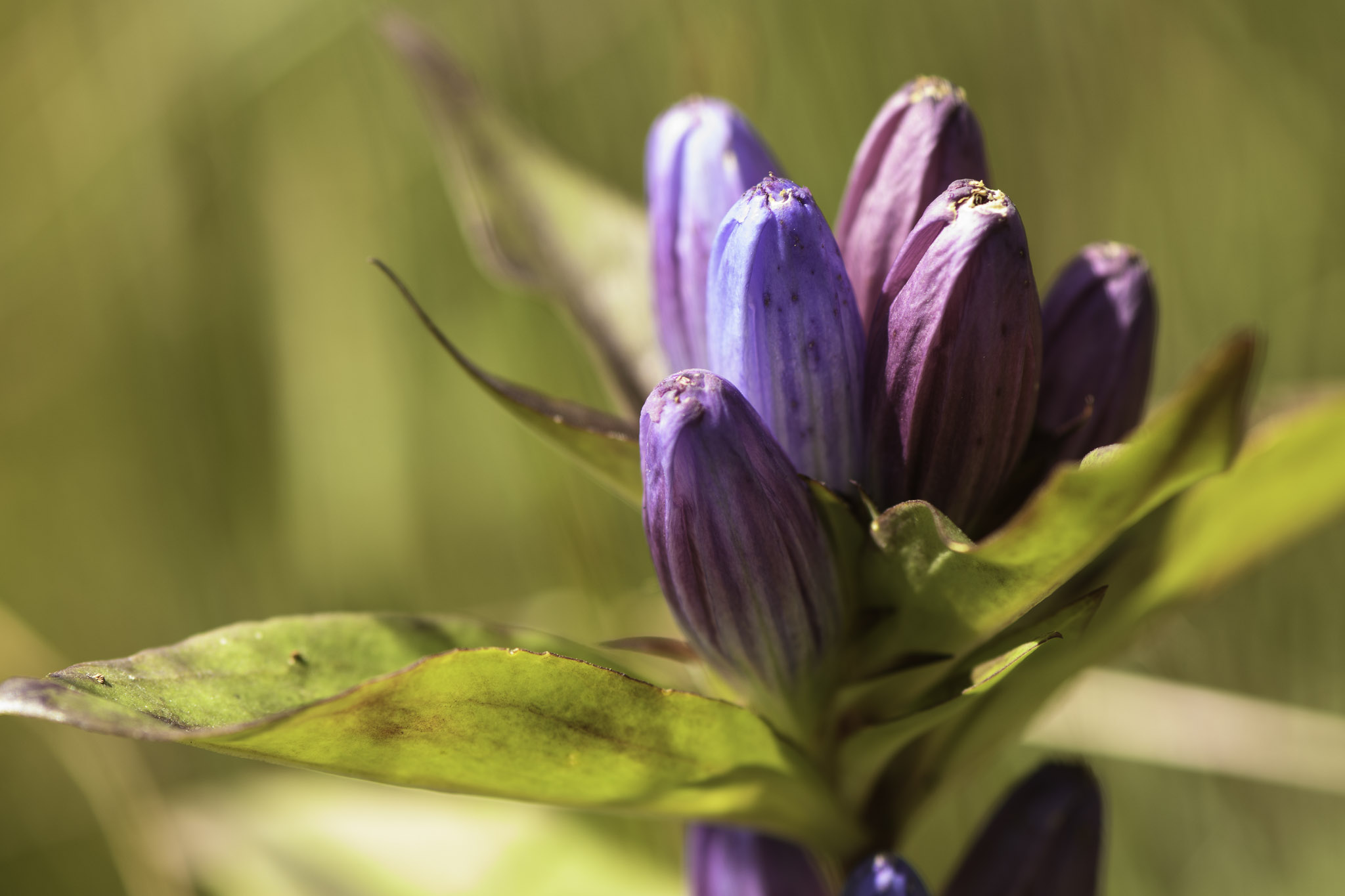
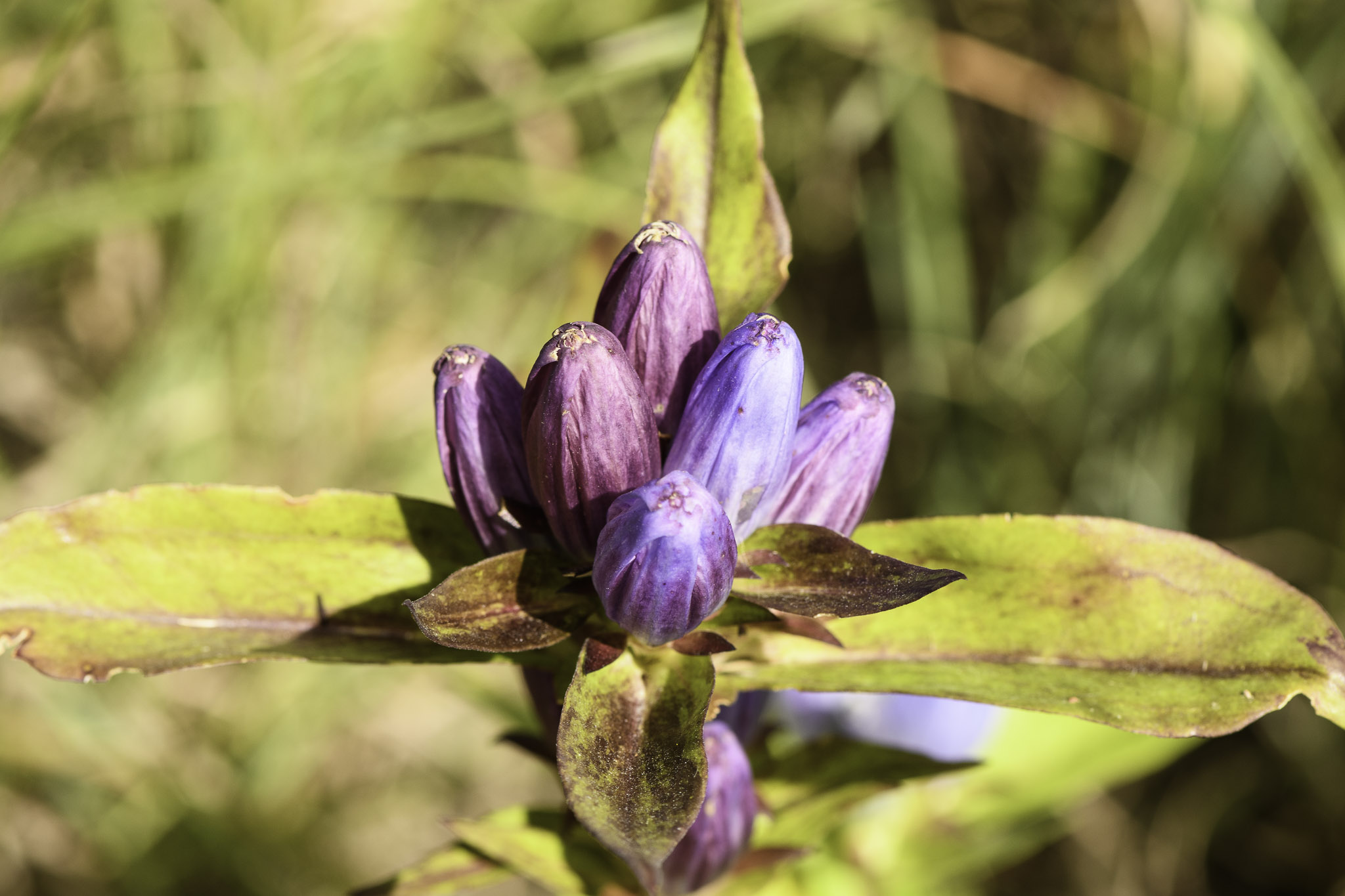

3 Comments
Oh dear...
I appreciate and enjoy the abundant information on the ILLINOIS WILDFLOWERS website, and have been very grateful for years that all of us on the Internet can use it. However, I have to deeply and respectfully disagree with the statement that “the ecological value of Bottle Gentian is low, notwithstanding the appeal of the flowers to humans.”
If a person is deciding which prairie flowers to plant in a limited space, of course choices must be made depending on what that person wants most. If the goal was to help migrating monarchs, for example, New England asters would be a better choice than bottle gentians. If the goal were to attract goldfinches, bottle gentians would help very little and cupplants would help a lot.
But claiming that a native flower has low ecological value in general is a different matter. Bottle gentians cover and hold soil and intercept raindrops, helping to prevent erosion. That alone has value. Gentian roots store carbon in soil. And there are almost certainly chemical interactions going on underground between gentian roots and the roots of other prairie plants. Researchers are barely starting to understand those complex interactions, but they know they are important And bottle gentians are probably used by small invertebrates that we don’t notice.
But there is also the philosophical point that native species have ecological value just by existing. The game of selecting which species are useful and which species are not would be a dangerous game even if we knew a lot more than we do.
And at this point, humans are in no position to proclaim that any native prairie species have low ecological value. Our history has put us humans in a big glass house.
PrairieFan Thu 5 Oct 12:30 PM
you and Leland Searles
were on the same wavelength here. His comment in the Iowa Wildflower Report Facebook group:
desmoinesdem Thu 5 Oct 8:20 PM
Thank you!
I appreciate your taking the time to share Leland’s wise comment — thanks! And fortunately, the vast majority of the information on the ILLINOIS WILDFLOWERS site is very good, useful, and worth consulting.
As a quick aside, it’s certainly true that using potted prairie plants instead of scattering seeds is often easier and faster. But bottle gentian seeds do grow in the right circumstances, even though they seem impossibly small.
PrairieFan Fri 6 Oct 2:13 PM